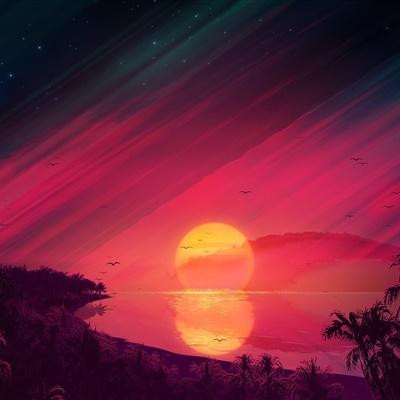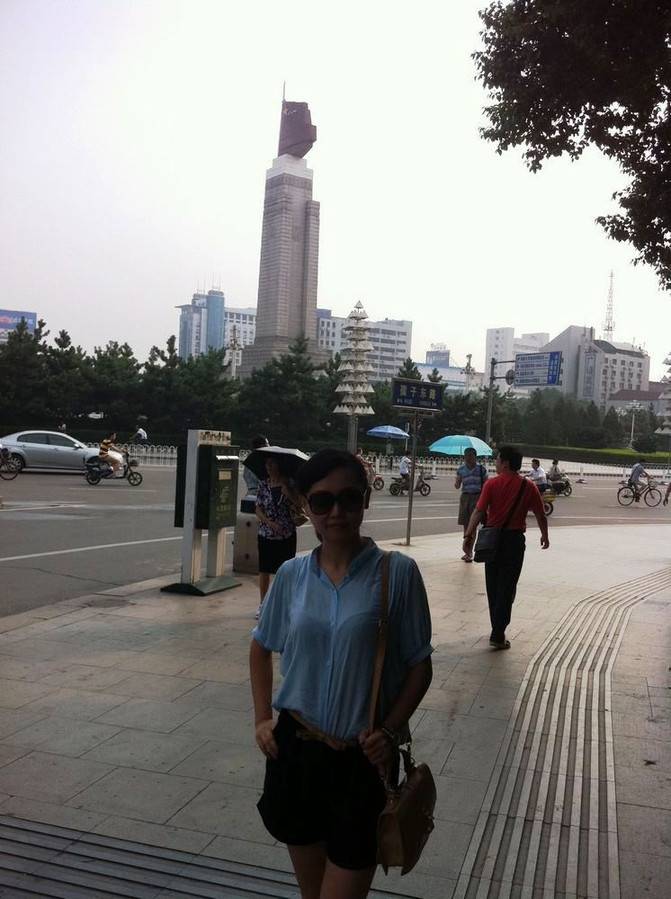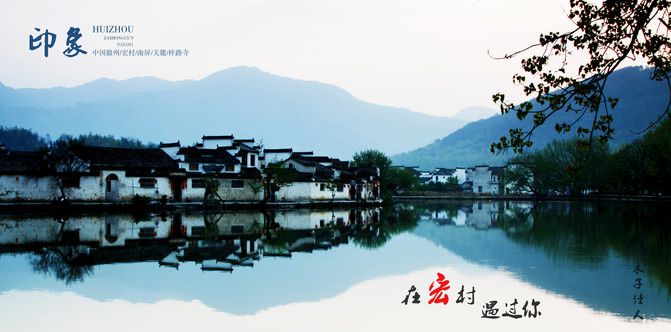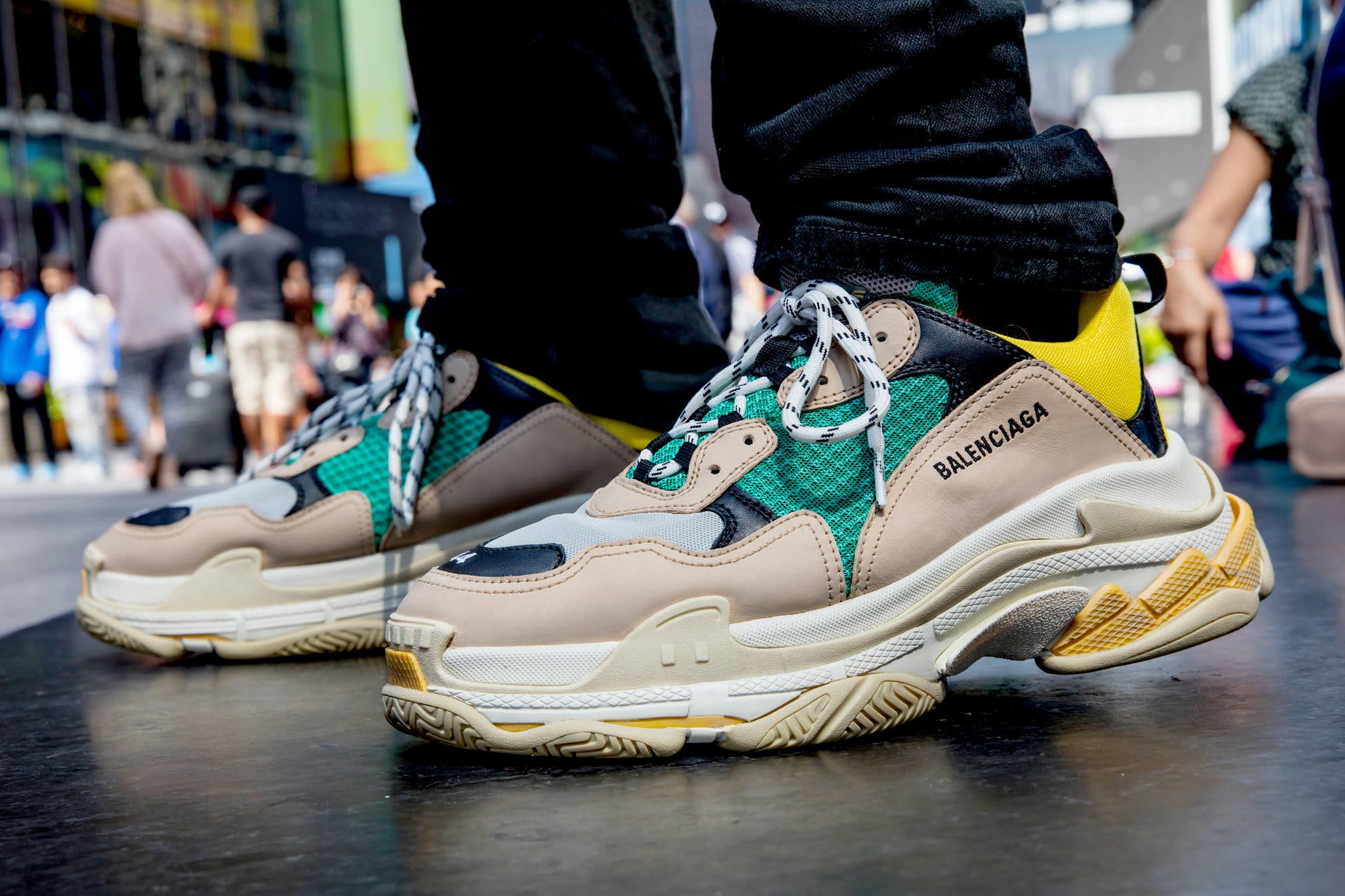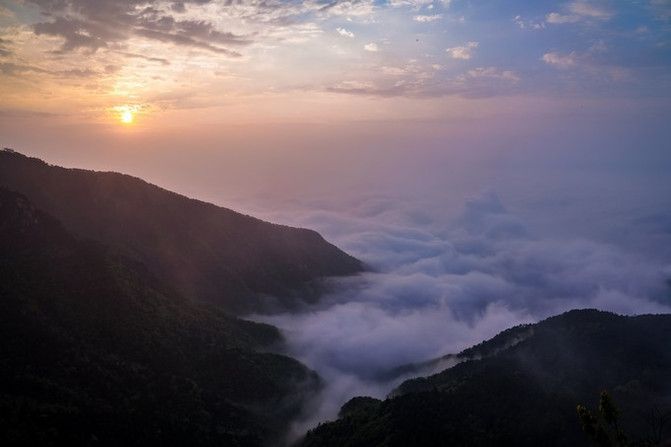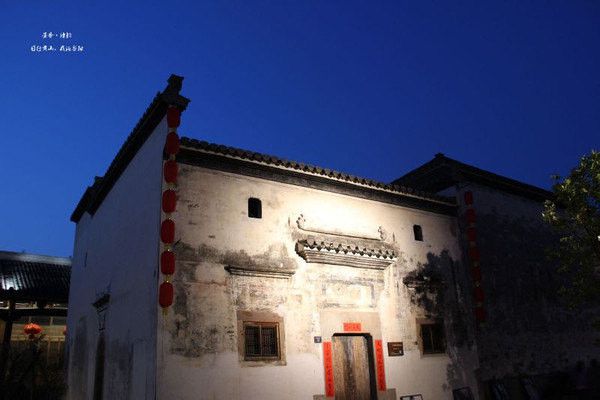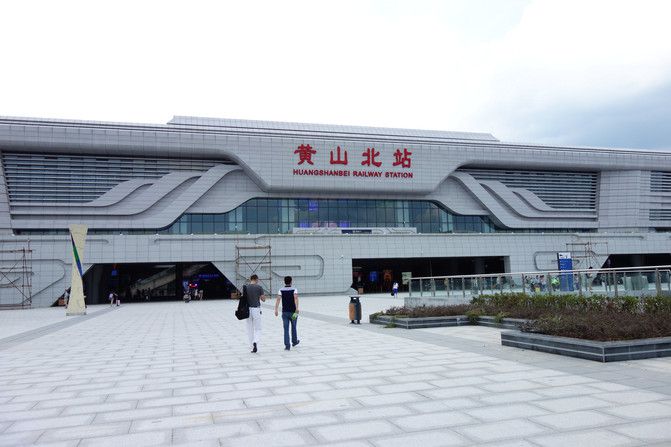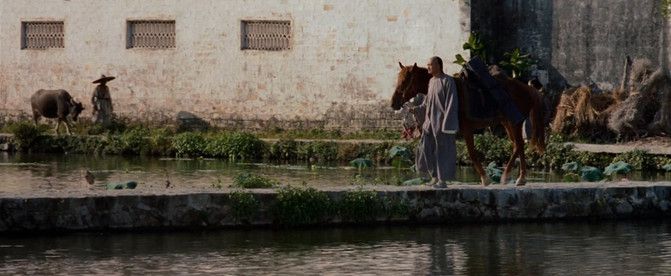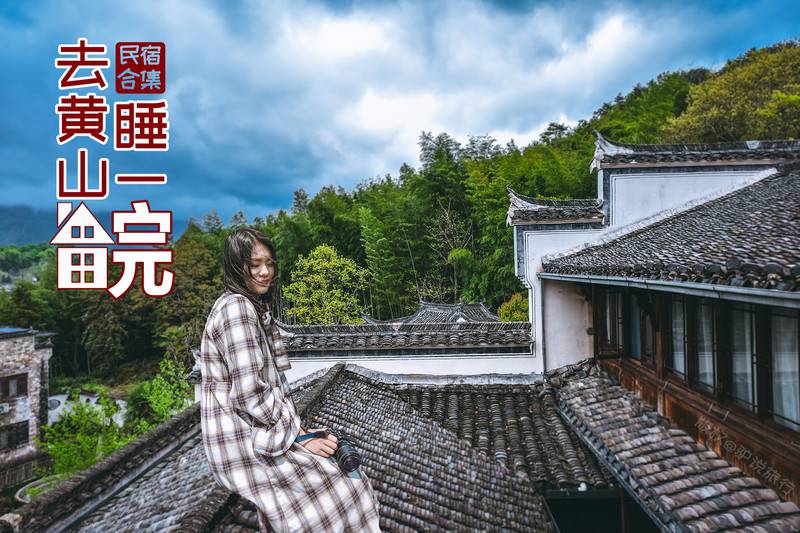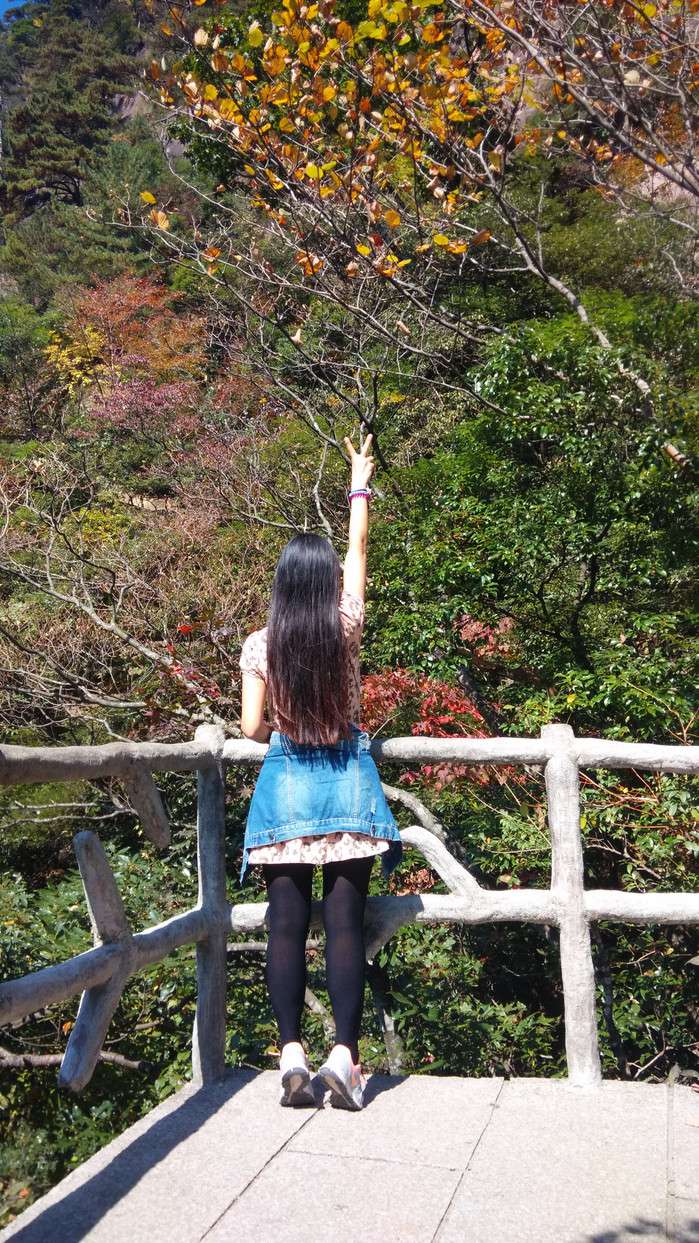September 06,2022 Post by :Ruoshui Chen
Huangshan Mountain view, Huangshan sightseeing, Huangshan attraction, Yellow Mountain sites, China HuangshanThe Yellow Mountains: A Full Guide Is Here!
The Yellow Mountains, also called Huangshan (the Scenic Area, not the city or prefecture) is one of the most famous and beautiful mountainous areas in China. It was listed as a World Heritage Site by UNESCO in 1990. Its spectacular natural scenery includes oddly-shaped pines and rocks and mystical seas of cloud.
Chinese: 黄山 Huángshān /hwung-shan/; huang means 'yellow' and shan means 'mountain(s)'
黄山 Huángshān /hwung-shan/; huang means 'yellow' and shan means 'mountain(s)' Entrance fee: CN¥190/US$30
CN¥190/US$30 Things to do: Enjoy hot springs, photography, and hiking
Enjoy hot springs, photography, and hiking Must sees: peculiar pines and rocks, seas of cloud, hot springs, sunrises and sunsets
peculiar pines and rocks, seas of cloud, hot springs, sunrises and sunsets Suggested visit: 2 days
2 days Location: about 50 km (30 miles) north of Huangshan City, Eastern China.
about 50 km (30 miles) north of Huangshan City, Eastern China. Transport: Bullet trains from Hangzhou (1½ hours) and Shanghai (2½ hours).
Bullet trains from Hangzhou (1½ hours) and Shanghai (2½ hours). Highest peak: 1,864 meters / 6,116 feet
Content Preview
Our clients are visiting Yellow Mountains.
The Yellow Mountains Get Their Name from the Yellow Emperor
The Yellow Mountains are not so called because the mountains are yellow, but because the area was renamed after the legendary Yellow Emperor (Huang Di) in 747 AD. It is said that the Yellow Emperor, the mythical ancestor of the Chinese, lived, refined precious medicines, and became a supernatural being on the Yellow Mountains .
After that Huangshan began its ascent to fame. Many Buddhist temples have been built and, more recently, it has become a popular attraction for its majestic scenery.
Huangshan City, about an hour from the Yellow Mountains (the Huangshan Mountains), and Huangshan Prefecture in which the mountains are located, get their name from the fame of the Yellow Mountains.
Highlights That Brighten Your Visit
Greeting Guest Pine on the Yellow Mountains.
Outstanding natural beauty is Huangshan's number one feature. The Yellow Mountains' classic attractions are known as its "Four Natural Wonders":
Imaginatively-named pines
Oddly-shaped rocks
Seas of cloud
Hot springs
Xu Xiake, a noted Chinese geologist in the Ming Dynasty (1368–1644), who visited the Yellow Mountains twice, left his praise in this quote:
"You don't need to see any more mountains after seeing 'the Five Mountains', and you don't need to see the other four mountains after seeing Huangshan."
Explore all the highlights with 3-Day Ancient Villages and Yellow Mountain Tour >>>
Imaginatively-Named Pines
Yellow Mountain pines are particularly hardy, seeming to twist directly out of the smooth rock. Many old pines have been named according to their appearance or some legend about them.
Greeting Guest Pine is the most famous pine in the Yellow Mountains, and doubtless in all of China. It is located on the east side of Jade Screen Peak, by Wenshu Cave. The 10-meter-high (33-foot-high) tree grows like a man standing by the path and stretching out his hand to guests in a greeting gesture. Many Chinese hang a poster of Greeting Guest Pine in their living rooms and restaurants as a decoration.
Read more about the pines of the Yellow Mountains.
Oddly-Shaped Rocks
Flying-Over Rock on the Yellow Mountains
Likewise, the oddly-shaped rocks of the Yellow Mountains get their names not only from appearance but also from legend. Each rock's name has a story, which gives the rock "life".
Flying-Over Rock is one of the most famous boulders in the Yellow Mountains. The 12-meter- (39-foot-) high rock leans like javelin flown-in on a huge rock ledge. The contact area is very small which makes it more amazing.
Read more about the oddly-shaped rocks of the Yellow Mountains.
Seas of Cloud: Frequently Seen Between November and May
The seas of cloud on the Yellow Mountains
The seas of cloud have contributed much to the ethereal atmosphere of the Yellow Mountains, making peaks look like islands in the sky. The best time to appreciate this phenomenon is from November to May, especially after rainy/snowy days, at sunrise or sunset.
There are hundreds of peaks and thousands of ravines in the Yellow Mountains, but five seas of cloud are named: North Sea, South Sea, East Sea, West Sea, and the Heavenly Sea (in the middle). Celestial Capital Peak (1,800 m / 5,900 ft), Lotus Peak (1,873 m / 6,145 ft), and Bright Top (1,841 m / 6,040 ft) are the three tallest peaks, and best locations to see the stunning seas of cloud.
Buddha's Light — a Rarely Seen Extra Wonder
Buddha's Light is an optical phenomenon like a halo surrounding the observer's shadow, once thought to show the observer's enlightenment. It only can be seen when the observer is between the sun and a cloud, which is around 40 times a year. You have to visit the mountain on a sunny day and get above a sea of cloud. Buddha's Light is most likely to appear between 3 PM and 4 PM at Jade Screen Peak, Celestial Capital Peak, and White Goose Ridge.
Awe-Inspiring Sunrises and Sunsets
We helped with our clients' proposal at sunset on the Yellow Mountains.
Watching sunrise and sunset is a very popular and highly recommended Yellow Mountains activity. The glow of the sunrise and sunset draws the shutterbugs to popular viewing spots for amazing colors on the fascinating landscape. For the best shots, you can visit Bright Top Peak for sunrise and Dispelling Cloud Pavilion for sunset.
Stunning sunsets and sunrises always are the best settings for memorable moments of honeymoon, anniversary, or birthday! Traveling with China Highlights, create your special and unforgettable journey.
Stay on the mountains to have the best chance to enjoy these spectacular views. Hotels on the mountains are harder to book, especially in peak season. Book at least one month in advance.
Recommended Photography Tour:
Hot Springs: a Bonus for a Winter Visit
Enjoy a hot spring after hiking on the Yellow Mountains in winter.
At the foot of the Yellow Mountains, you can find some famous hot spring hotels, on whose grounds are the hot springs. In the cold of winter, relax your muscles and warm your body in a hot spring after a day's hiking.
Hot springs not only relax you from the tiredness of climbing, but also have the function of healing and restoration. It is said that Huang Di (the Yellow Emperor) bathed in the hot spring and became younger. So, the springs are also called the Springs of Youth.
Discover all highlights with us:
How to Visit the Yellow Mountains
The mountain area is usually divided into three parts: Front Mountains (Jade Screen Scenic Area and Heavenly Sea Scenic Area ), Back Mountains (North Sea Scenic Area and Songgu Valley), and the West Sea Grand Canyon (West Sea Scenic Area ).
For a one-day trip plan, you can choose one of the three parts to explore via round-way cable car to admire its wonders.
To enjoy more highlights at a comfortable pace as well as watching a sunset and sunrise, an overnight stay on the mountains is recommended. Back Mountain or the West Sea Grand Canyon are suggested for 1 day of a 2-day trip.
To hike around the three parts, 3 days are recommended.
The Front Mountains: the Tallest Peaks, Sheer and Rugged Beauty
Our clients are hiking to the Celestial Capital Peak.
Highlights: Greeting Guest Pine, Jade Screen Peak, Celestial Capital Peak, Lotus Peak, Bright Top Peak
Greeting Guest Pine, Jade Screen Peak, Celestial Capital Peak, Lotus Peak, Bright Top Peak Closest cable car: Yuping cable car, CN¥90 (US$14), 15 minutes
You should meet Greeting Guest Pine, which appears on many many paintings. You will also have the chance to climb the tallest peaks if they're open. (Don't if you are afraid of heights and steepness.) Bright Top Peak offers a perfect view of sunset, sunrise, and seas of cloud, with an easier ascent.
The Back Mountains: Friendly to Kids and Seniors, Most Highlights with Least Walking
Stone Monkey Watching the Sea
Highlights: Beginning-to-Believe Peak, Refreshing Terrace, Lion Peak, Stone Monkey Watching the Sea
Beginning-to-Believe Peak, Refreshing Terrace, Lion Peak, Stone Monkey Watching the Sea Closest cable car: Yungu cable car, CN¥80 (US$13), 8 minutes
Back Mountain is an ideal place to admire most of the imaginatively-named pines. For a photo tour, Back Mountain is not to be missed for the sunrise. You can get the best shots at Refreshing Terrace, Lion Peak, and Stone Monkey Watching the Sea.
West Sea Grand Canyon: Challenging but Less Crowded
Steep steps lead to the bottom of the West Sea Grand Canyon.
Highlights: 1st Ring, 2nd Ring, Fairy-Walking Bridge, Flying-Over Stone
1st Ring, 2nd Ring, Fairy-Walking Bridge, Flying-Over Stone Closest cable car: Taiping Telpher CN¥90 (US$14), 8 minutes, Asia's longest telpher at 3,709 m (2.3 miles) long
Known for dream-like scenery, West Sea Grand Canyon hides its beauty at the bottom. Sharply dropping hundreds of meters, the thrilling and rugged trails make it challenging. Fewer people descend due to its hiking difficulty. Thus, you can enjoy the landscape in relative tranquility.
To get to the bottom, it's down stone steps all the way, and some sections are very narrow and steep (nearly 70 degrees!). Therefore, hiking in West Sea Grand Canyon can be a big challenge, especially to your knees.
West Sea Grand Canyon is usually closed from December to April because of snow and maintenance.
A Classic 2-Day Yellow Mountains Tour
Watching Sunrises at the Yellow Mountains.
Staying overnight near the mountain tops allows a more relaxing pace and enough time to admire stunning a sunrise and sunset. Cable cars are beneficial to save time and energy, since there are an estimated 60,000 steps to the main highlights.
Day 1: Go up to the mountain and visit West Sea Grand Canyon.
Take Yungu Cable Car to the top of the mountain.
Walk for about 30 minutes to your hotel.
After lunch, hike down to the bottom of theWest Sea Grand Canyon.
Watch the sunset at Cloud-Dispelling Pavilion or Bright Top Peak.
3 routes are recommended for West Sea Grand Canyon:
1½ hours: The 1st Ring only, then hike back via the same way
The 1st Ring only, then hike back via the same way 2½ hours: The 1st Ring and the 2nd Ring, then hike back via the same way
The 1st Ring and the 2nd Ring, then hike back via the same way 2 hours: Visit the right side of the 1st Ring and the left side of the 2nd Ring for better scenery, then take The West Grand Canyon Monorail to Tianhai Station from the bottom of the canyon to the top.
Recommended accommodation: Shilin Hotel (4-star) / Xihai Hotel (5-star) / Huangshan Paiyun Hotel (5-star)
Day 2: Beihai Scenic Area, descend from the mountains
Enjoy the sunrise at Refreshing Terrace.
See Black Tiger Pine and Dream Flower Pine
Take the Yungu cable car down from the mountain
Recommended Tours with the Yellow Mountains:
3-Day Trekking in the Yellow Mountains
Yellow Mountains Trekking Map
Hiking up offers more views and fun for energetic people. To save energy and time, we always suggest Yungu (‘Cloud Valley') Temple up and Ciguang Ge (Benevolent Light Pavilion') down. You can visit all the highlights with less walking. Besides, you can reach Huangshan City with the least time (one hour), compared with the other two entrances. You can choose the opposite direction, but it will be more challenging.
Day 1: Hike up the Yellow Mountains from Yungu Temple (about 5 hours)
Length: about 10.5 kilometers (6.5 miles)
Start your trek from Yungu Temple
Pass several peculiarly-shaped rocks including Stone Table and Immortal Pointing the Way.
Arrive at White Goose Ridge.
After lunch, see Beginning-to-Believe Peak, Flower Peak, and Stone Monkey Watching the Sea
tips: Yungu Cable Car to White Goose Ridge is an option to save time and strength.
Accommodation: Shilin Hotel (4-star) / Xihai Hotel (5-star) / Huangshan Paiyun Hotel (5-star)
Day 2: Trek in the West Sea Grand Canyon (about 6 hours)
Length: 12.5 kilometers (7.8 miles)
Watch the sunrise at Refreshing Terrace.
Hike to Cloud-Dispelling Pavilion.
Trek down into West Sea Grand Canyon. Hike the essential parts — the 1st Ring, 2nd Ring, Bottom, Plank Way, and Fairy-Walking Bridge.
Tips: Take a packed lunch, as there are no restaurants at the bottom of West Sea Grand Canyon.
Accommodation: Baiyun Hotel (4-star).
Day 3: Hike Down the Yellow Mountains after Visiting Guest-Welcoming Pine (about 6 hours)
Length: 12 kilometers (7.5 miles)
Watch the sunrise at Bright Top.
Hike to One Hundred Ladders (one hour).
Then hike to Jade Screen Pavilion to see the famous Greeting-Guests Pine.
Culminate by trekking up the steepest peak, Celestial Capital Peak (about 2 hours).
Trek down to the shuttle bus park at Ciguang Ge (approximately 3 hours).
Leave for the station or the airport for your next destination.
Tips: The Yuping Cable Car to Ciguang Ge is optional to save time and strength.
Learn details of the full itinerary here. We can also customize these itineraries per your interests and schedule.
How to Get to the Yellow Mountains
The usual way to get to the mountains is to first go to Huangshan City, then connect with an hour transfer by road to Huangshan Scenic Area.
To reach Huangshan City, you can choose bullet trains from Hangzhou (1½ hours), Shanghai (2½ hours), Suzhou (3 hours), or Beijing (6½ hours). Or you can choose flights from Beijing, Xi'an, Chengdu, Guangzhou, Shenzhen, Guilin, or Kunming.
Upon arriving in Huangshan City, you can take the direct bus from airport or train station. However, the direct buses don't leave as schedule. You might need to wait until almost all seats are sold out. Contact us for a private transfer, which is less hassle and more efficient for a weekend trip.
See Huangshan Transport.
Best Times to Visit the Yellow Mountains
Huangshan is worth visiting all year round, particularly in spring (late March to May) and autumn (September to mid-November) for the most comfortable weather.
Spring (Late March to May): Comfortable Weather, the Flower Season
Spring Flowers on the Yellow Mountains
Temperature averages: 5°C (41°F) to 15°C (60°F)
In spring, leaves are fresh with verdancy. Blossoming azalea flowers decorate the mountains. Hiking on the mountain tops, you are likely to encounter seas of cloud. And breezes make the hike more comfortable.
Summer (June to September): Retreat from the Heat
Visting the Yellow Mountain in Summer
Temperature averages: 13°C (55°F) to 20°C (68°F)
Thanks to their altitude, the Yellow Mountains are a wonderful summer retreat in a sea of green. Summer is also the rainy season and the air is at its clearest post rain. After the rain, the peaks are surrounded with mist, creating dream-like scenery. But the long queues and difficulty to book a mountain hotel make it less attractive. Contact us in advance to get a room.
Autumn (October to November): Clear Skies and Red Leaves
Colorful leaves enlighten the Yellow Mountains.
Temperature averages: 4°C (39°F) to 12°C (55°F)
Autumn always spoils Yellow Mountain visitors: it's a good season to climb mountains, with less rain and pleasant weather. Plus, the clear skies and red leaves bless the Yellow Mountains with awesome vistas.
Winter (December to mid-March): Snowy Scenery
Snowy Scenery on the Yellow Mountains
Temperature averages: -6°C (21°F) to 3°C (37°F)
Though the Yellow Mountains are cold, they are still worth visiting. You can see snow-capped mountains and rime-covered trees if you're lucky enough to meet snowy weather. Both the entrance fees and hotels are discounted, and you can enjoy a virtually crowd-free trip in winter.
See more on Huangshan Weather.
Travel Tips
Travel light! You're highly suggested to take a small backpack for your overnight stay on the mountain. Your cases can be stored at the foot of the mountains at the cost around CN¥20 (US$4) each.
What to pack:
walking poles (if you use them)
sunscreen
mosquito repellent
enough warm clothes (it's several degrees colder at altitude), layers of clothes are practical for taking on and off when climbing the mountain.
waterproofs
wear trekking shoes/boots with a good grip
You're suggested to keep away from monkeys on the mountain. Don't bring out food in front of them.
Sedan chairs are available on the higher mountain paths, usually from CN¥150 (US$24) per km. Make an appointment at least one week in advance to ensure their availability. It is rarely possible to get a sedan chair half way up.
During the low season, from November to January, the three cable cars will take turns to stop operating for annual maintenance. Contact us for updated news on that and more.
Where to Stay on the Mountains
Room of Beihai Hotel
The room rates for hotels on the mountains are usually higher than those in the cities and they have more basic facilities. For example, the condition of a "4-star" hotel on the Yellow Mountains is similar to that of a 2–3-star hotel in Shanghai. For environmental protection (to save bringing them up the mountains and rubbish down), no toiletry kits are provided, but you can buy them.
Every item on the mountains is carried up by porters (or cable cars), thus you can expect much higher prices. For example, a 500 ml bottle of water costs CN¥10 (US$1.50), and a simple meal costs CN¥150 (US$23) per person.
Most people stay at the Back Mountains for weekend (2-day) trips, while hikers might stay at the Front Mountains for a trekking tour. Therefore, our suggested hotels are listed by location:
The Back Mountains
Beihai Hotel is currently under reconstruction.
Shilin Hotel (3–4-star): a photography theme hotel, from US$98
Suitable for those who have a limited budget
25 minutes' walking from Yungu Cable Way
10 minutes' walking from Refreshing Terrace (best spot to see sunrises)
Xihai Hotel (4–5-star): better service than Shilin Hotel, lower price than Paiyun Hotel, from US$113
15 minutes' walking from Taiping Telpher
40 minutes' walking from Yungu cable car
Huangshan Paiyun Hotel (5-star): best facilities on the mountain top, from US$164
Suitable for those who have high requirements for hotel
10 minutes' walking from Taiping Telpher
45 minutes' walking from Yungu Cable Way
Redecorated in 2020 and reopened in 2021
The Front Mountains
Yupinglou Hotel (3-star): not recommended, from US$98
Right by Yuping Cable Car Station
Inconvenient for most highlights
Old-fashioned rooms with lower service standards
Baiyun Hotel (4-star): from US$112
the closest hotel to Bright Top Peak (best place to see sunrises, sunsets, and seas of cloud)
Room rates go up steeply on weekends, public holidays, and student summer holiday (July to August). With limited hotel choices, just contact us to book your hotel at least one month before!
Touring the Yellow Mountains with China Highlights
China Highlights aims to provide you with the best travel service possible. Contact us and will try our best to get over any difficulties you encounter while planning your time in Huangshan.
See our popular tours below for inspiration:
See the best of the Yellow Mountains and wander around picturesque Hongcun village and Tunxi Ancient Street, for a scenic and historical tour. Our tours can be customized. Just tell us your interests and requirements and we will tailor make your own Yellow Mountains tour.
Top 10 Attractions in Huangshan (Tips, Photos & Map) « China Travel Tips – Tour-Beijing.com
by
Dear Travelers,
We’d like to have the following quick guide to be always updated for the benefit of new visitors coming to Huangshan Mountain, literally Yellow Mountain. If you have any questions or anybody having used the piece finds necessary updates, please leave a message or feedback. Thanks!
__________
Plan your Huangshan Tour? “Huangshan (黄山)” has two meanings – Huangshan Mountain and the city of Huangshan which is named after the Mt. Huangshan (Yellow Mountain).
Huangshan Mountain is about 70km north of Huangshan City.
Mt.Huangshan (Mount Huangshan or Huangshan Mountain) literally, Yellow Mountain, is a mountain range in southern Anhui province in eastern China.
Mount Huangshan is world-famous for its beautiful landscape – sunrise, sunset, granite peaks, pine trees, and the other-worldly sea of the clouds. Also much of Huangshan Mountain’s reputation comes from its significant impact on Chinese art, literature and profound cultural resources.
The World Heritage Committee of UNESCO put Mount Huangshan on the list of World Natural and Cultural Heritage in 1990. Mount Huangshan was named the “sister mountain” of Jungfrau in the Swiss Alps.
My version of Top 10 Attractions in Mount Huangshan is focused on Mount Mountain itself instead of the greater Huangshan City area.
For Huangshan Best Visiting Time, check out Best Time to Visit Huangshan for more information.
1. Welcome Pine (Ying Ke Song) 迎客松
The Welcome Pine is a symbol of Mount.Huangshan, a national pride featuring her integrity. The painting or picture of this Welcome Pine Tree is often seen in some important and solemn areas in China.
The Welcome Pine stands firmly by the side of the Qingshi Stone on the left side of Yupinglou Hotel in the Hangshan Scenic Area. The Welcome Pine is at the altitude of 1770 meters with its two branches stretching out over 7 meters, resembling a host extending her two arms to welcome the tourists coming from all parts of the world.
Actually the gnarled forms of pine trees are ubiquitous in Huangshan. But this greeting pine tree is the most impressive and representative. It is not surprising that people have to line up to take pictures of the welcome pine in tourist season.
How to get there ? Most people would go up to the summit of Mount Huangshan through either the Eastern Steps or Western Steps ( Walking up or taking cable car).
For faster way of going up to see the Welcome Pine, you may choose to walk or take the cable through the Western Steps starting from Mercy Light Temple Cable Car Station up to the Yuping Cable Car Station or you may challenge yourself by hiking over 10km route.
Walking from Mercy Light Temple to the Welcome Pine Tree takes about 3 hours. If you take the cable car, you still need to walk another 40 minutes one you arrive at the Cable Car Station on the western hillside.
Welcome Pine (Ying Ke Song)
2. Bright Summit (Peak) 光明顶
The Bright Summit is situated on Mt.Huangshan at the altitude of 1860, the second highest peaks and one of the three main peaks in Mt.Huangshan. The Bright Peak is relatively flat where you can easily view the supernatural Eastern Sea, Western Peaks, Tiandu Peak, Lianhua Peak with a longer sunshine time, hence the Bright Summit.
The Bright Summit is one of the best places to view the sunrise and the clouds of sea. Huangshan Meteorological Station lies on the summit. You may hike to the Bright Summit either from Cloud Dispelling Hotel or Baiyun Hotel.
Last time from Cloud Dispelling Hotel, we started our 3km hike up to the Bright Summit (光明顶), the second highest peak in Hangshan, 1860 meters in altitude and on to our hotel – Baiyun Hotel.
Later this 3km walk turned out to be the most difficult on our two day trip in Huangshan. It took us over three hours walking from Cloud Dispelling Hotel to Beiyun Hotel by climbing over the Bright Summit.
Bright Summit
3. Xihai Great Canyon (West Sea Canyon) 西海大峡谷
Xihai Great Canyon is a new developed scenery as the result of years’ efforts building the facilities to have better views of the gorge. The first phase of the building is finished.
Xihai Great Canyon Scenic Area is about 25 square km with a length of 15 km. People can stand on the middle hillside to view the canyon in a hovering way.
It is a hard and awe-inspiring hike to the gorge ( Xihai Great Canyon ). Normally it takes 4 hours to complete the up and down loop hike. You may access the canyon starting from the northern entrance near Paiyunlou Hotel (Cloud Dispelling Hotel).
Xihai Great Canyon (West Sea Canyon)
4. Cloud Dispelling Pavilion 排云亭
The Cloud Dispelling Pavilion is on the west of Mount Huangshan at the entrance to the Western Sea Canyon. The Pavilion was built in the year of 1925. It is a long scenic pavilion made of marble granite slabs carved with three Chinese characters “排云亭” ( Cloud Dispelling Pavilion).
Sometimes clouds rise from the nearby gorges and flock the pavilion and reluctant to disperse. Standing at the pavilion, you will see the peaks in the mist of the clouds, hence of the name of Cloud Dispelling Pavilion.
Cloud Dispelling Pavilion is also a good point of viewing the queer rockeries on the mountain, hence another nickname of Weird Rockeries Exhibition Hall”. An old pine tree in front of the pavilion is listed as World Cultural Heritage. The pine tree’s root goes deep into the rock and cuts the rock into three pieces. The tree is 6. meters high and 150 years old.
From Cloud Dispelling Hotel,you may hike up to the Flying-over Rock and Bright Summit, or hike down to the Xinhai Great Canyon.
Cloud Dispelling Pavilion
5. Flying-over Rock 飞来石
Yellow Mountain is famed for its weird rocks in different shapes. The Flying-over Rock is the most impressive and representative. The area around the Flying-over Rock comprises 30% of the queer rocks in Mount Huangshan.
The Flying-over Rock on the way up from Cloud Dispelling Hotel on to the Bright Summit. The Flying-over Rock is about 1 km down to its northwest. It is said that you will have luck if you touch the rock.
Flying-over Rock
6. Lianhua Peak ( Lotus Flower Peak ) 莲花峰
Lianhua Peak is the highest peak in East China, of course in Huangshan at the altitude of 1864 meters. There is only one walking path up the peak starting from Yupinglou Hotel.
The 1.5 km hike from Lianhua range to Lianhua Peak, you will see beautiful pine trees and other attractions. On the summit of Lianhua Peak, you will view Tianmushan in to the east, Lushan to the west, Jiuhuashan to the north and Yangtze River. Like other peaks in Huangshan, Lianhua Peak is fenced with iron railings hung with locks for good wishes.
Lianhua Peak ( Lotus Flower Peak )
7. Tiandu Peak ( Heavenly Capital Peak ) 天都峰
Facing Lianhua Peak to the west, Tiandu Peak stands on the southeast of Mt.Huangshan at the altitude of 1810. One of the three peaks in Huangsan and the other two being Lianhua Peak and Bright Peak.
Tiandu Peak ( Image Credit:
Tiandu Peak literally means “Heaven Capital” which comes from the ancient legend that the peak is where the immortals gather, hence the name of Heaven Capital Peak.
On the top of the peak is a flat summit where there is a stone chamber that can hold approx 100 people. Tiandu Peak is the most risky,steep peak among the three main peaks in Huangshan.
8. Beginning-to-believe Peak 始信峰
If you don’t ascend Beginning-to-believe Peak at the altitude of 1668 meters, you don’t know Huangshan pines. Here are clustered with many famous pine trees in Mount Huangshan.
Long long time ago, a man was doubtful of the beauty of Mount Huangshan and at last visited Huangshan. He was shocked by the beauty and began to believe the charm of Huangshan, hence the name of Beginning-to-believe Peak.
There is a wide selection of famous pine trees like Black Tiger Pine, Lianli Pine, Sleeping Dragon Pine. Beginning-to-believe Peak is on the summit of Mount Hangshan.
It is better to take the east steps or taking the cable car from Yungu Telpher New Station and get off at White Goose Telpher Station, then walk to Beginning-to-believe Peak.
The sunrise glow over the Beginning-to-believe Peak
9. A Flower on the Brush Tip 梦笔生花
You continue to walk from Beginning-to-believe Peak on to the north, you will soon see ” A Flower on the Brush Tip”, also known as Brush Peak. It is located on the northeast of Mount Huangshan, not far from Beihai Hotel.
A Flower on the Brush Tip is one of the most impressive site in Huangshan Mountain. On the sea of pines, a rock stands out round below and sharp above with a pine tree on the tip, a natural brush pen.
A Flower on the Brush Tip
10. Stone Monkey Gazing over the Sea of Clouds 猴子观海
If you continue to walk from Beihai Hotel for over 10 minutes, you will see the queer stone on the top of a peak which has an interesting name of Stone Monkey Gazing over the Sea of Clouds.
A rock in the shape of a monkey and stone monkey look as if it is looking afar or going to jump into the sea of clouds. When clouds disperse, the monkey is looking at the peaceful fields below.
Stone Monkey Gazing over the Sea of Clouds
Admissions and expenses concerned
Entrance Fee: RMB 230 (March – Nov); RMB 150 (Dec-Feb)
Opening Hours: 06:30 – 16:30
Children under 1.2 meters : free of charge
Children between 1.2 m and 1.5 : half price
Yuping Cable Car: RMB 80 (single way) East Trance
Yungu Cable Car: RMB 80 (single way) West Entrance
Taiping Cable car: RMB 80 (single way ) North Entrance
How to get to Mt.Huangshan Scenic Area
1. First you should get to the city of Huangshan. Huangshan is easily reached from Beijing and Shanghai by train and flight. Daily buses and trains bring you from Hangzhou to Huangshan.
2. Then take buses from the city of Huangshan ( also known as Tunxi) to Tangkou Town. From Tangkou Town, you take the local shuttle bus to the starting points of Mt.Huangshan: Mercy Light Temple ( Cable Car Station ) and Yungu Cable Car Station.
Hassle-free Huangshan Guided Tours
If you don’t want to go the do-it-yourself route and prefer the hassle-free escorted tours, here are some options for guided tours to Huangshan:
Huangshan Tour
Huangshan Highlight One Day Group Tour
3 Day Huangshan & Hongcun Village Tour
Beijing Huangshan Hongcun 3 Day Round Trip by High Speed Train
Hangzhou Huangshan Hongcun 3 Day Tour By High – Speed Train
Shanghai Huangshan 3 Day Tour by High Speed Train
Anhui Tour
Further Readings
Best Time to Visit Huangshan
Top 10 Attractions in Huangshan
Where to Stay in Huangshan
My First Day on Mount Huangshan (1)
My First Day on Mount Huangshan (2)
My Second Day on Mount Huangshan (1)
My Second Day on Mount Huangshan (2)
My Third Day on Mount Huangshan
Huangshan Snowy Wonderland
Hongcun Village
She County Photography Tour
Huangshan Travel Blog
Top 10 Attractions in Jiuhuashan
Top 7 Attractions in Anhui
Huangshan Taxi: Huangshan Taxi Fares, Tips and Phones
Shanghai Huangshan Transportation
How to drive from Huangshan City Center to Huangshan Scenic Area
Any questions, just drop a line.
Tags: Top 10 Things to do in Huangshan, Top Attractions in Huangshan, Top attractions in Huangshan Mountain, Top attractions in Yellow Mountain, Top Things to do in Huangshan, What to see in Huangshan
Huangshan Mountain view, Huangshan sightseeing, Huangshan attraction, Yellow Mountain sites, China Huangshan
Huangshan Mountain located in the south of Anhui Province is one of China's five famous mountains. Listed on UNESCO's World Natural and Cultural Heritage List, Huangshan Mountain is famous for its beauty, bizarre rock formations, and ancient pines. There is an ancient saying in China that says: "you won't want to visit any other mountains after seeing the five famous mountains, and after seeing Huangshan Mountain, you won't want to see the five famous mountains."

Huangshan is famous for what is called, "The Four Wonders of Huangshan Mountain." The four wonders are the ancient pines, bizarre rock formations, the sea of clouds and the hot springs. Huangshan Mountain is covered in pine trees that grow in crevices in the mountain. Because of the mountain's terrain, the trees are unable to grow straight and upright. The pines are crooked, and twisted and are beautiful to behold. Many of the trees on Huangshan Mountain are over 1,000 years old. The bizarre rock formations on Huangshan Mountain inspire the imaginations of all who visit it. The rocks carved by millennia of wind and rain have taken on many bizarre shapes that resemble many realistic and fanciful creatures.
The sea of clouds is best seen in the winters on Huangshan Mountain. Because of the height of the mountain, the clouds are often lower than the mountain's peaks, so visitors to Huangshan can see mountains and peaks in the distance peeking up through the clouds, which look like islands floating in an ocean of mist. The natural hot springs on Huangshan mountain are an amazing way to relax after the workout visitors get from climbing around the mountain. The springs which originate at the Purple peak are said to have been used by Huang Di, the ancestor of all Chinese people to bathe 49 days before he became immortal and ascended to heaven.
Although every part of Huangshan Mountain is stunning, there are several scenic areas that most visitors are attracted to. The Cloud Valley Scenic Area is well known for its ancient rock inscriptions and ancient twisted pines formed by centuries of wind and rain. This area boasts many ancient trees including a ginkgo tree that is believed to be over 1,000 years old.
The Heavenly Sea Scenic Area is located on the Huangshan Mountains Northern slope. This area is known for its rare plant species and has high oxygen content. The many different species of flowers in this area bloom at different times, so visitors to this area are almost always greeted with an explosion of color.
The Jade Screen Scenic Area is known as an "imperial palace in Heaven". Huangshan Mountain's three main peaks are all located near this area. Mounting its summit, visitors can view the boundless beauty and feel that they are sitting in a heavenly palace. Lotus Peak, which is one of Huangshan's most famous peaks, gets its name from the shape of the peak, which resembles a lotus blossom. Many ancient pine trees live around this peak. Of interest to visitors are the thousands of padlocks that can be found on the peak's chain railings. The locks were placed there by young lovers, couples, or families from both home and abroad. When visitors come here, they have their names or some words engraved on the locks. They then lock the locks onto the chains and throw the keys down the mountain. This symbolizes that their love or luck will be forever locked to Huangshan Mountain.
The North Sea Scenic Area is the hub of Mt. Huangshan, where most of the most famous scenery and scenic spots meet. Numerous ancient pines and wonderful stone formations can be seen in the North Sea Scenic Area. The North Sea Scenic Zone is the most important and famous among the scenic zones of Mt. Huangshan. It is a sight not to be missed. There are a number of hotels located here, so visitors can spend the night seeing the spectacular sunrises.
The Pine Valley Scenic Area situated on Huangshan Mountain's northern face is famous for its bizarre rock formations and natural pools. Located in this area are the Pine Valley Temple and the Pine Valley Nunnery, which is nestled at the foot of Diezhang Peak. Originally built in 1253A.D, the nunnery was rebuilt in 1426A.D. The surroundings here are quiet and pleasant. It is a good place to enjoy the ancient stone inscription and other beautiful scenery.
The West Sea Scenic Area is the best place for viewing the sea of clouds and the sunset on Huangshan Mountain. Here, the beautiful peaks and ancient pines leave visitors awe-struck. The clouds and mist clinging to the peaks are ever-changing making the many peaks appear like small islands in a sea of clouds. The pines, rocks, ridges, and peaks in the newly-opened White Cloud Scenic Area are more colorful and wonderful than those of the other areas. The gullies and valleys are deep and tranquil and the glow of sunset upon this area is beyond description. In this area, there are 16 viewing terraces, 10 bridges, and 6 different waterfalls and natural springs.
Visitors to Huangshan Mountain in the fall and winter should make sure to watch the clouds and glow of sunset in this area. Snow falls on many parts of the world and makes the world bright, crisp and clean. But the snow on Huangshan Mountain is special to most places in the world. What makes Huangshan Mountain's snow different is the magic that occurs when the snow settles on the ancient pines, rocks, and pools of Huangshan Mountain. It forms a perfect union that makes this already amazing area even more beautiful. For further information, some Huangshan notes might help.
Contact us for a tailor-made China tour incl. Mt. Huangshan.


